When summer temperatures soar, we naturally reach for the fan remote or crank up the air conditioning. But what about our feline companions? The question “do cats like fans” is more complex than it might seem at first glance. While your kitty might curl up in a sunny spot during winter, their relationship with artificial airflow during hot weather tells a fascinating story about feline behavior and biology.
Understanding whether cats appreciate fans requires us to dive into their unique cooling mechanisms, individual preferences, and the various factors that influence their comfort levels. Some cats seem to gravitate toward the gentle breeze of a ceiling fan, while others bolt at the first whir of the motor. The truth is, cats have their own sophisticated ways of managing temperature, and fans can play a supporting role when used thoughtfully.
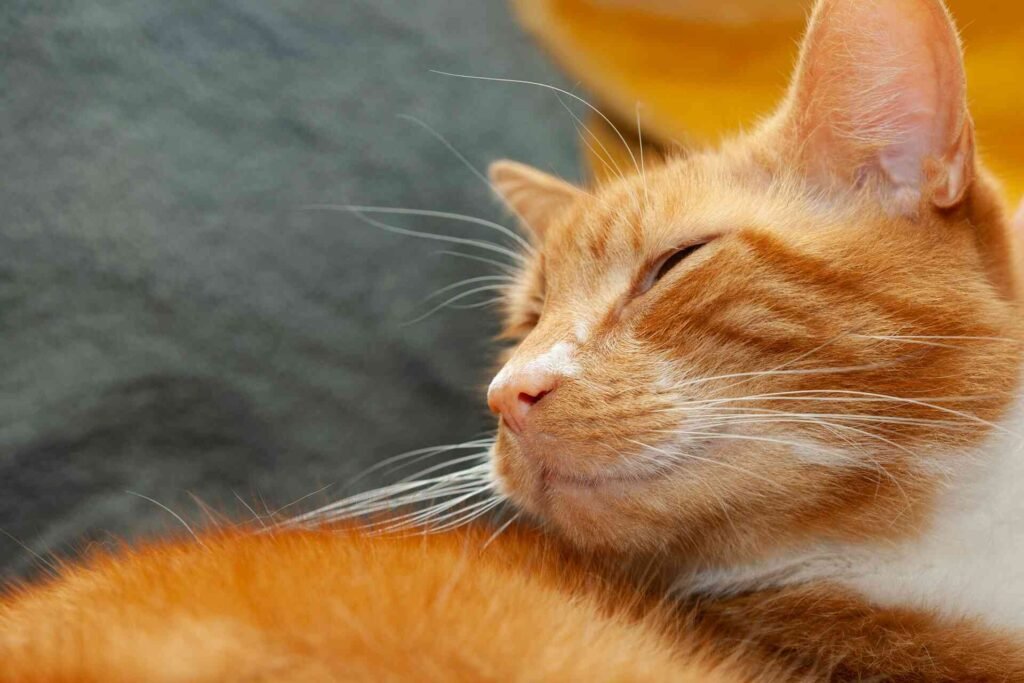
How Cats Regulate Their Body Temperature
Unlike humans who can sweat from head to toe, cats have developed remarkably different strategies for staying cool. Their desert ancestry has equipped them with efficient temperature regulation methods that don’t rely heavily on external airflow. Cats primarily cool themselves through several natural mechanisms that work together to maintain their optimal body temperature.
The most obvious cooling method is panting, though cats typically reserve this for times when they’re genuinely overheated. More commonly, cats regulate temperature through grooming behavior. When they lick their fur, the saliva evaporates and creates a cooling effect similar to how sweating works for humans. They also seek out cool surfaces like tile floors, bathroom sinks, or shaded areas under furniture.
Strategic positioning plays a crucial role in feline temperature management. You’ve probably noticed how cats seem to have an uncanny ability to find the coolest spot in any room. They’ll sprawl across hardwood floors, squeeze under the couch, or find that one tile that stays perpetually cool. This behavior demonstrates their natural instinct for temperature regulation.
Cats also have limited sweat glands located only in their paw pads, which means they can’t rely on sweating as their primary cooling method. This biological reality significantly impacts how they respond to fans and whether cats like fans blowing on them becomes a relevant question for your particular pet.
Do Cats Like Fans Blowing on Them?
The answer to whether cats enjoy fans depends largely on individual personality, the intensity of the airflow, and the surrounding temperature. Many cats do appreciate the gentle circulation that fans provide, especially during warmer months. However, their preference often differs from what we might expect based on human comfort levels.
Gentle airflow tends to be more appealing to cats than direct, strong breezes. A ceiling fan running on low speed often creates an environment that cats find pleasant, while a powerful desk fan aimed directly at their favorite sleeping spot might send them searching for calmer air. The key lies in understanding that cats prefer subtle environmental changes rather than dramatic ones.
Some cats actively seek out areas with fan-generated airflow, particularly in the summer when temperatures rise. These cats might position themselves strategically where they can benefit from the air circulation without being directly in the path of strong wind. They seem to understand instinctively how to use the fan’s effects to their advantage.
On the flip side, cats with more sensitive temperaments might find the noise and movement of fans stressful. The motor sound, blade movement, and unpredictable air patterns can trigger anxiety in some felines. Cat behavior varies significantly between individuals, and what one cat finds soothing, another might find overwhelming.
Factors That Influence Fan Preference
Several elements determine whether your cat will embrace or avoid fan-generated airflow. Coat length plays a significant role, with long-haired breeds often showing more appreciation for cooling airflow than their short-haired counterparts. Persian cats, Maine Coons, and other fluffy breeds may genuinely benefit from and enjoy the temperature regulation that fans provide.
Age is another crucial factor. Senior cats often have more difficulty regulating their body temperature and might gravitate toward areas with gentle air circulation. Young, active cats might be less concerned with cooling methods since they typically have more efficient natural temperature regulation.
The noise level of the fan significantly impacts acceptance. Whisper-quiet models are more likely to be tolerated than older, louder units. Some cats even find the consistent white noise of a quiet fan soothing, similar to how some people use sound machines for sleep.
Do Cats Like Fans in Hot Weather?
When temperatures climb, the question of whether cats like fans in hot weather becomes more pressing. During heat waves or in poorly ventilated homes, fans can provide crucial relief for our feline friends. However, cats’ natural cooling behaviors become more pronounced during these times, and fans work best as a supplement to their instinctive temperature management.
Hot weather often triggers increased grooming behavior in cats. You might notice your cat spending more time licking their fur during summer months. This behavior becomes more effective when combined with gentle air circulation, as the evaporation process is enhanced by moving air. A strategically placed fan can boost the effectiveness of this natural cooling mechanism.
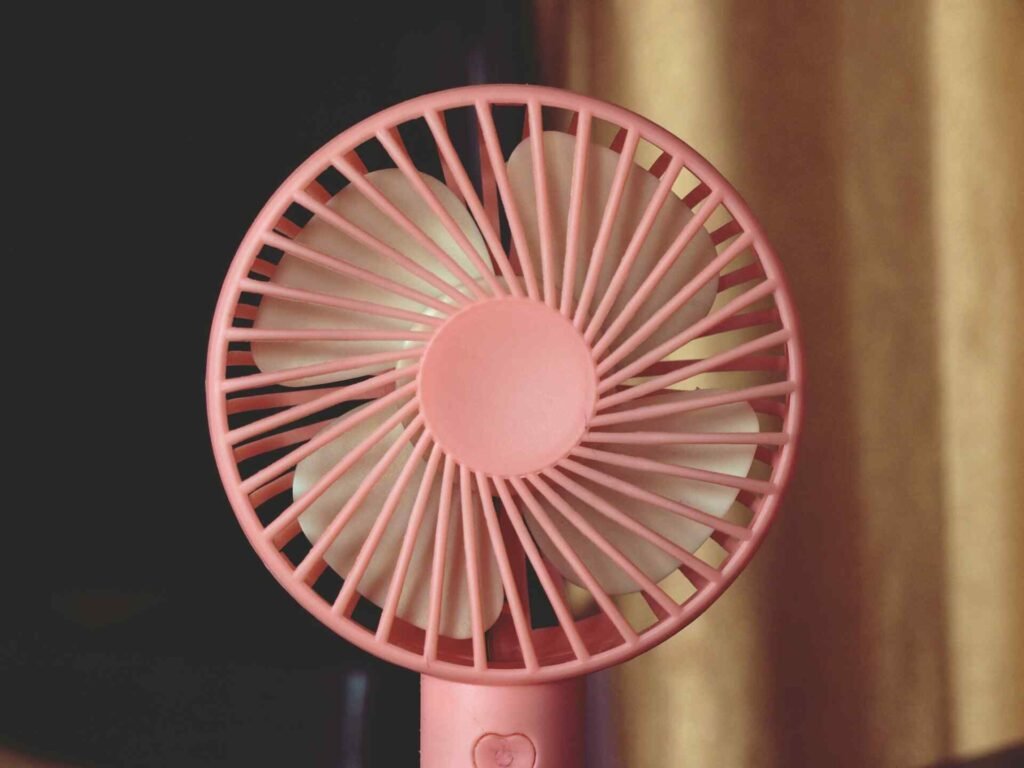
Indoor cats particularly benefit from fans during hot weather since they can’t seek relief outdoors in shaded areas or cool dirt. For these cats, fans become an essential tool for maintaining comfort when air conditioning isn’t available or sufficient. The key is providing options rather than forcing airflow on reluctant cats.
Many cats develop seasonal preferences regarding fans. A cat that shows no interest in airflow during mild weather might actively seek out fan-cooled areas when temperatures rise. This behavioral shift demonstrates their adaptive intelligence and ability to recognize beneficial environmental conditions.
Signs Your Cat Appreciates Fan Airflow
Recognizing whether your cat enjoys fan-generated airflow requires careful observation of their behavior and body language. Cats who appreciate fans will often position themselves strategically in relation to the airflow, finding the sweet spot where they can benefit without being overwhelmed.
Relaxed positioning near fans is a positive indicator. If your cat chooses to nap, groom, or simply hang out in areas where they can feel gentle air movement, they’re likely finding it beneficial. Cats who enjoy fans might even move their sleeping spots to take advantage of air circulation patterns.
Watch for seeking behavior where cats actively move toward fan-generated airflow when they’re feeling warm. This might manifest as moving from a sunny window to a spot near a ceiling fan or relocating from a warm room to one with better air circulation.
Conversely, cats who dislike fans will typically avoid areas with airflow or show signs of stress when exposed to it. They might leave the room when fans are turned on, find hiding spots away from air movement, or display anxious behaviors like excessive grooming or restlessness.
Why Some Cats Don’t Like Fans
Several factors can make fans unpleasant or even stressful for cats, and recognizing these issues allows us to make better choices about cooling methods. Noise sensitivity ranks among the top reasons cats avoid fans. Feline hearing is far more acute than human hearing, and sounds that seem acceptably quiet to us might be quite bothersome to cats. The constant whir of a fan motor, especially older or poorly maintained units, can create ongoing stress for sensitive cats.
The unpredictable movement of air can also trigger anxiety in some cats. Unlike steady environmental conditions that cats prefer, fans create constantly changing air patterns that some felines find unsettling. This is particularly true for cats who are already anxious or have had negative experiences with sudden air movements.
Some cats associate fans with disrupted scent patterns. Since cats rely heavily on scent for navigation and comfort, the air circulation from fans can disperse familiar odors and make them feel less secure in their environment. This is especially problematic for cats who are highly territorial or stress-sensitive.
Previous negative experiences can also create lasting aversions to fans. A cat who was startled by a fan turning on suddenly, knocked over by strong airflow, or scared by fan noise might develop a permanent dislike for all fans, regardless of their type or intensity.
Working with Fan-Averse Cats
For cats who don’t appreciate traditional fans, alternative cooling methods can provide relief without causing stress. Cooling mats offer temperature regulation without noise or air movement, making them ideal for cats who prefer static cooling solutions.
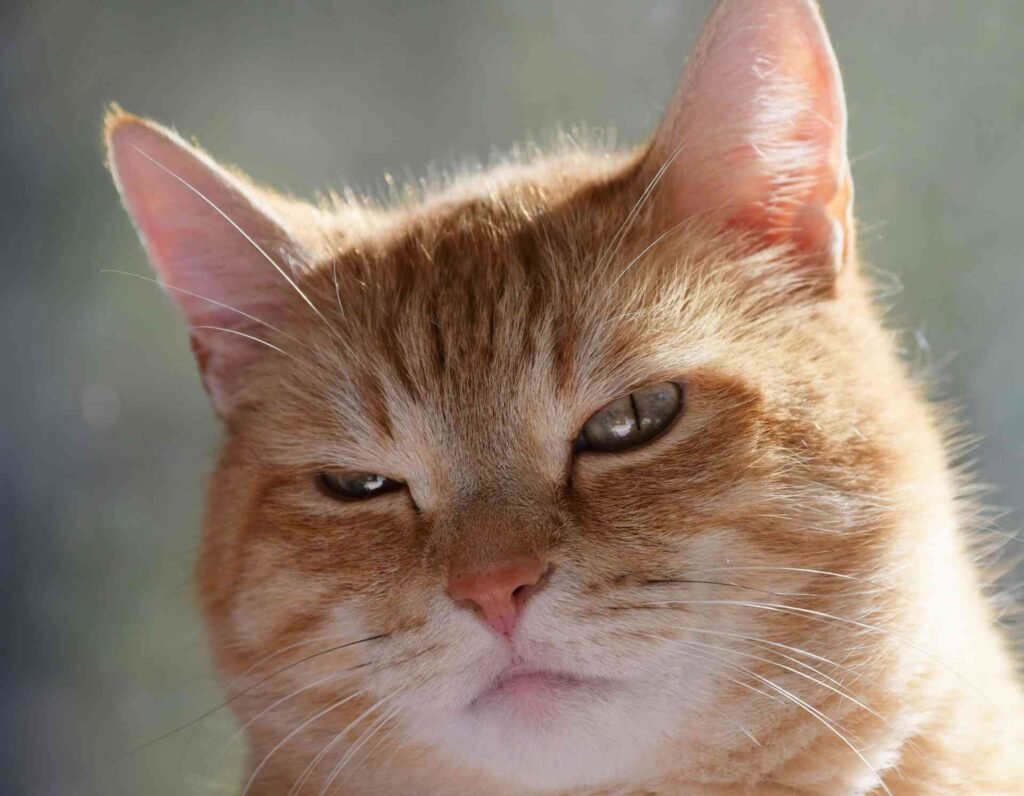
Strategic placement of quiet fans away from main cat areas can still provide environmental benefits without direct exposure. A fan in an adjacent room can improve overall air circulation without creating uncomfortable conditions in your cat’s preferred spaces.
Gradual desensitization might help some cats become more comfortable with fans over time. Starting with very brief exposure to quiet fans at low speeds, combined with positive experiences like treats or play, can sometimes shift a cat’s perception from negative to neutral or even positive.
Types of Fans and Their Cat-Friendliness
Not all fans are created equal when it comes to feline comfort. Understanding the different types available and their relative advantages can help you choose the best option for your cat’s needs and preferences.
Ceiling fans often represent the ideal choice for cat households. Their height keeps them safely out of reach of curious paws while providing gentle, room-wide air circulation. The indirect nature of ceiling fan airflow means cats can position themselves to benefit from the air movement without being subjected to direct, strong breezes.
Tower fans offer excellent adjustability and tend to be quieter than traditional pedestal fans. Their oscillating features allow for varied air distribution, giving cats multiple options for positioning themselves relative to the airflow. Many modern tower fans include remote controls, making it easy to adjust settings without disturbing resting cats.
Bladeless fans have gained popularity partly due to their safety features and quiet operation. Without exposed moving parts, these fans eliminate the risk of curious cats getting injured while investigating the air source. The smooth airflow they generate often appeals to cats who find traditional fan blade patterns disruptive.
Fan Features That Matter to Cats
When selecting a fan with feline comfort in mind, certain features prove more important than others. Noise level should be the primary consideration, as even cats who don’t mind airflow may be disturbed by loud motor sounds. Look for fans specifically marketed as “whisper quiet” or those with decibel ratings below 40 dB.
Adjustable speed settings allow you to find the perfect balance between effective air circulation and cat comfort. What works for intense summer heat might be too much for mild warm days, and having multiple speed options ensures you can adapt to changing conditions and cat preferences.
Stability becomes crucial when cats are involved. Fans that tip easily pose safety risks and might startle cats, creating negative associations. Look for fans with wide, heavy bases or secure mounting options that won’t be disturbed by curious cat investigations.
Oscillation features can be beneficial or problematic depending on your cat’s personality. Some cats appreciate the varying air patterns, while others prefer consistent, predictable airflow. Fans with optional oscillation give you the flexibility to accommodate your cat’s preferences.
Fan Safety Considerations for Cat Owners
Safety should always be the top priority when using fans around cats. Feline curiosity combined with moving mechanical parts can create dangerous situations if proper precautions aren’t taken. Understanding potential risks and implementing protective measures ensures that cooling solutions don’t become safety hazards.
Traditional pedestal and table fans pose the greatest risks due to their accessible location and exposed blades. Even fans with protective grilles can be problematic if the spacing allows cats to insert paws or whiskers. Secure mounting or placement in areas where cats can’t reach eliminates most direct contact risks.
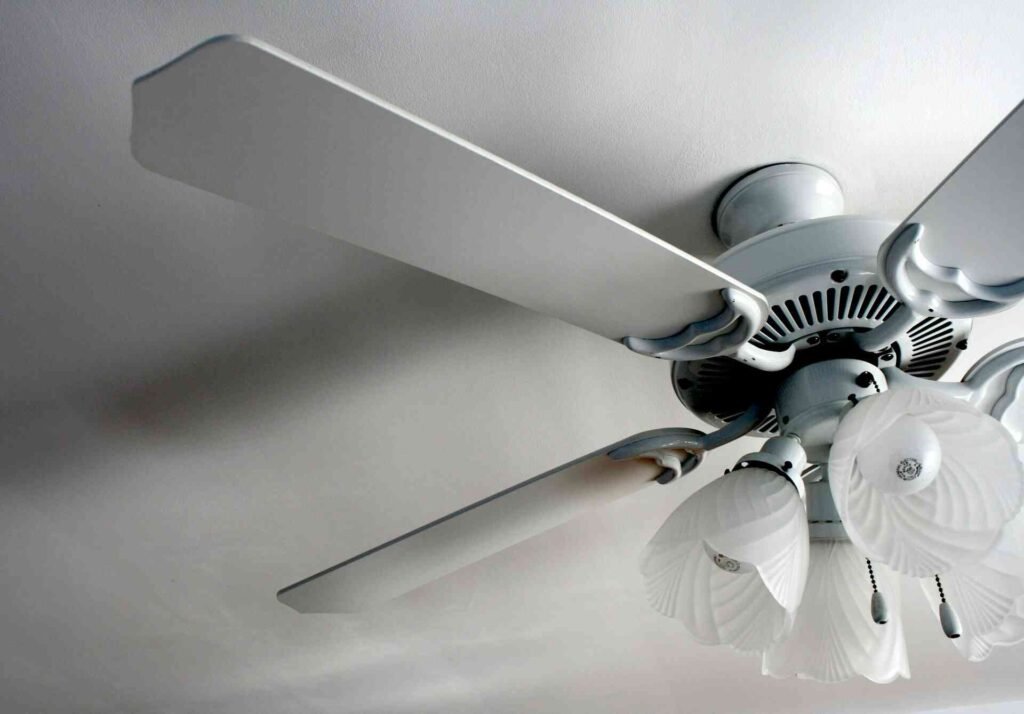
Electrical safety requires attention to cord management and outlet protection. Cats who chew on cords face electrocution risks, while water bowls placed near electrical devices create additional hazards. Using cord protectors and ensuring fans are positioned away from water sources prevents most electrical accidents.
Stability concerns extend beyond just tipping hazards. Fans that vibrate or move during operation might walk across surfaces and potentially fall. Regular maintenance checks ensure that mounting hardware remains secure and that fan components haven’t loosened over time.
Creating Cat-Safe Cooling Zones
The most effective approach to using fans safely around cats involves creating designated cooling areas where airflow benefits are maximized while risks are minimized. These zones should offer cats the choice to enter or leave fan-influenced areas as their comfort levels dictate.
Multiple options work better than single solutions. Having both fan-cooled areas and fan-free cool zones gives cats the freedom to choose their preferred cooling method at any given time. This might include combining ceiling fan areas with cooling mat stations or shaded spots away from any airflow.
Gradual introduction of new fans helps cats adjust without stress. Starting with fans off but visible allows cats to investigate and become familiar with the new equipment. Once they’ve accepted the fan’s presence, brief periods of quiet operation help them adjust to the sound and air movement.
Consider the seasonal approach to fan placement and usage. Fans that work well during peak summer heat might be unnecessary or even uncomfortable during mild weather. Adjusting your cooling strategy based on temperature and observing your cat’s responses ensures year-round comfort.
Comparison: Natural vs. Fan-Assisted Cat Cooling
| Cooling Method | Effectiveness | Cat Acceptance | Energy Use | Safety Level |
|---|---|---|---|---|
| Natural seeking behavior | High | Excellent | None | Very High |
| Ceiling fans | Moderate-High | Good-Excellent | Low | High |
| Tower fans | Moderate | Fair-Good | Low-Moderate | Moderate-High |
| Pedestal fans | Moderate | Poor-Fair | Low | Moderate |
| Cooling mats | Moderate | Good | None-Low | Very High |
| Air conditioning | Very High | Excellent | High | High |
This comparison shows that while natural cooling behaviors remain the gold standard for cat comfort, fans can provide valuable supplemental cooling when chosen and used appropriately. The key lies in selecting methods that complement rather than replace cats’ natural temperature regulation strategies.
Understanding this comparison helps explain why some cats readily accept fans while others prefer alternative cooling methods. Individual preferences play a huge role, and the most successful cooling strategies often combine multiple approaches tailored to each cat’s specific needs and tolerances.
Alternative Cooling Methods When Fans Aren’t the Answer
For cats who don’t appreciate fans, numerous alternative cooling strategies can provide relief during warm weather. These methods often work by supporting cats’ natural cooling behaviors rather than introducing artificial airflow that some cats find stressful.
Cooling mats and pads rank among the most popular fan alternatives. These products use various technologies, from gel-filled designs to phase-change materials, to provide cool surfaces without electricity or noise. Cats can choose when to use them and easily move away when they’ve cooled sufficiently.
Elevated resting areas take advantage of the natural principle that warm air rises. Cat furniture positioned to catch natural air circulation, such as tall cat trees near windows or raised beds with good airflow underneath, can provide cooling benefits without mechanical assistance.
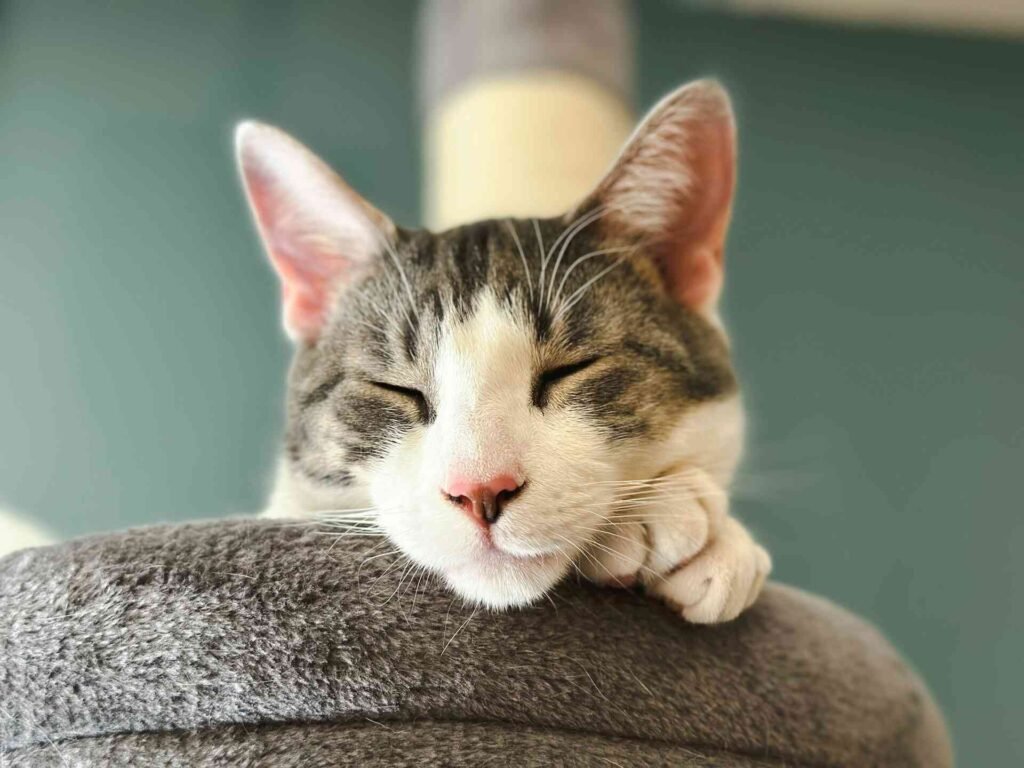
Water-based cooling methods appeal to many cats, though individual preferences vary widely. Some cats enjoy walking through shallow water dishes on hot days, while others prefer having multiple fresh water sources available throughout the house. Frozen treats made from diluted tuna juice or low-sodium broth can provide internal cooling while offering enrichment.
Environmental Modifications for Natural Cooling
Creating a naturally cooler environment often proves more effective than adding mechanical cooling devices. Window management using blackout curtains or reflective film can dramatically reduce heat buildup during peak sun hours. Opening windows during cooler parts of the day allows natural air circulation without the need for fans.
Floor surface considerations matter more than many cat owners realize. Hard flooring like tile, hardwood, or stone naturally stays cooler than carpet and provides ideal surfaces for cats seeking temperature relief. Adding easily washable cooling mats or even damp towels to these surfaces can enhance their effectiveness.
Shade creation throughout the home gives cats multiple options for finding comfortable spots. This might involve rearranging furniture to create shaded areas, adding cat-friendly shelving in cooler parts of rooms, or simply ensuring that cats have access to multiple rooms with different temperature profiles.
Hydration stations become particularly important during warm weather. Multiple water bowls, including some with ice cubes, ensure that cats can maintain proper hydration regardless of their location in the house. Some cats prefer running water from pet fountains, which can also provide slight cooling through evaporation.
Frequently Asked Questions
Do cats like fans at night?
Many cats do appreciate gentle fan airflow at night, especially during warm weather. Whether cats like fans blowing on them at night depends largely on the fan’s noise level and the intensity of airflow. Quiet ceiling fans or tower fans on low settings often provide comfortable sleeping conditions without disrupting cats’ natural sleep patterns. However, cats who are sensitive to noise or air movement might prefer alternative cooling methods during their rest time.
Can electric fans be dangerous for cats?
Electric fan safety depends entirely on the type and placement of the fan. Properly installed ceiling fans pose minimal risk, while accessible pedestal fans with exposed blades can be hazardous. The main risks include paw or whisker injuries from blade contact, electrical hazards from cord chewing, and potential injuries from unstable fans tipping over. Choosing fans with protective grilles, secure mounting, and cord management eliminates most safety concerns.
Why do some cats sit directly in front of fans?
Cats who position themselves directly in fan airflow have typically learned that this provides effective cooling. These cats understand how to use the air movement to enhance their natural cooling mechanisms, particularly the evaporation of saliva from grooming. Cat behavior like this demonstrates their intelligence in adapting to available environmental resources for comfort.
How can I tell if my cat is overheating?
Signs of feline overheating include excessive panting, drooling, lethargy, restlessness, and seeking out cool surfaces more frequently than usual. If you notice these symptoms, provide immediate cooling options and consult with a veterinarian if the condition doesn’t improve quickly.
Should I leave fans on when I’m not home?
Leaving fans on while away can be beneficial during hot weather, provided they’re safely installed and your cat has shown positive responses to them. Ceiling fans are generally safe to leave running, while portable fans should only be left on if they’re securely positioned and your cat doesn’t show destructive behaviors around them. Always ensure your cat has access to fan-free areas as well as areas with air circulation.
Do kittens react differently to fans than adult cats?
Kittens often show more curiosity about fans but may also be more easily startled by the noise and movement. Their smaller size makes them potentially more vulnerable to strong airflow, so gentler settings are typically appropriate. Young cats usually adapt more quickly to new environmental elements like fans, making early introduction potentially beneficial for long-term acceptance.
Wrapping Up: Finding Your Cat’s Perfect Cooling Balance
Every cat is unique, and their relationship with fans reflects their individual personality, experiences, and comfort preferences. Some cats will sprawl blissfully in the path of a gentle ceiling fan, while others prefer the quiet coolness of a tile floor in a fan-free room. The key to success lies in observation, patience, and providing multiple cooling options that allow your feline friend to choose what works best for them.
Remember that fans work best as part of a comprehensive cooling strategy rather than a standalone solution. Combining gentle air circulation with natural cooling opportunities and proper hydration creates an environment where cats can regulate their comfort effectively.
The journey to finding your cat’s ideal cooling setup might involve some trial and error, but the effort pays off in increased comfort during those sweltering summer days. Whether your cat becomes a fan enthusiast or prefers alternative cooling methods, the most important thing is ensuring they have safe, effective ways to stay comfortable when temperatures rise.
Most importantly, never force cooling solutions on reluctant cats. The goal is to enhance their natural comfort, not create additional stress. With patience, observation, and the right approach, you can help your feline companion stay cool and comfortable throughout the warmest months while maintaining the peaceful, stress-free environment they crave. After all, a comfortable cat is a happy cat, and isn’t that what we all want for our beloved feline family members?
Looking for more? Explore our Cat Health section for more posts like this, visit the Blog for fun and insightful reads, or browse our full Cat Category for everything feline-related, from care to comfort.
Disclaimer: This article is for informational purposes only and does not substitute for professional veterinary advice. Always consult your veterinarian for diagnosis and treatment tailored to your cat’s individual needs. Please verify current product information directly on the retailer’s site before purchasing.
Check out our most recent articles!
- Why Does My Cat Act Scared of Me Sometimes? Cat Fear and Building TrustWhen your beloved cat suddenly seems frightened of you, it can feel heartbreaking. But feline fear has identifiable causes and proven solutions that can restore your special bond.
- Do Dental Treats for Cats Actually Work? Feline Oral Health ExplainedWhile dental treats can’t work miracles, they’re surprisingly effective tools for maintaining feline oral health when used correctly. Discover which products actually deliver results and how to maximize their benefits for your cat’s teeth and breath.
- Where Do Feral Cats Sleep? Outdoor Cat Resting SpotsEver wondered where neighborhood cats disappear at dusk? Discover the fascinating world of feral cat sleeping habits and the survival instincts that guide their nightly shelter choices.
- Why Does a Mother Cat Bite Her Kitten’s Neck? Feline Maternal BehaviorNature’s Perfect Transport System: Ever wondered why mother cats carry kittens by the neck? This ancient behavior triggers a special relaxation response that keeps babies safe during moves, and it’s far more sophisticated than it looks.
- Are Stainless Steel Bowls Good for Cats? Upgrading Your Cat’s Feeding ExperienceWhile plastic bowls develop bacteria-harboring scratches and ceramic can chip dangerously, stainless steel maintains its smooth, hygienic surface for years. Learn why this simple switch could transform your cat’s mealtime.
- Every Type of Cat Bed Explained: What Type of Bed Do Cats Actually Prefer?Cats spend 12-16 hours daily sleeping, making the right bed essential for their health and happiness. Discover which of the many cat bed types will become your feline’s favorite sanctuary.
- Are Elevated Cat Bowls Better? Complete Guide and AnalysisThe debate over elevated versus traditional cat bowls isn’t just about aesthetics. Discover how the simple change in feeding height can impact your cat’s digestion, comfort, and overall mealtime satisfaction.
- What Is Whisker Fatigue in Cats? Signs and SolutionsThat finicky eating behavior your cat displays might not be pickiness at all. Whisker fatigue, a surprisingly common condition caused by overstimulated whiskers, could be making mealtime stressful for your feline friend.
- The Complete Guide to Cat Feeding Mats: Do You Need One?Is your cat turning every meal into a messy adventure? Learn when feeding mats are worth the investment, which materials work best, and how to choose the right size for single or multi-cat households.
- What Does It Mean When Your Cat Stares at You?From affectionate slow blinks to attention-seeking gazes, discover how your cat uses staring as their primary method of human communication.










